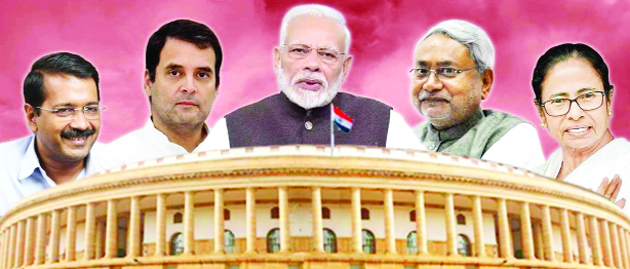Brij Bhardwaj
All is set for the battle royale in 2024 to elect the new Lok Sabha. The party that wins a majority of seats in these elections will rule India for the next five years. On one side is the NDA led by Prime Minister Narendra Modi who is seeking a third term. On the other side is a group of 36 parties seeking to replace him. The NDA has a ten year track record and is talking of plans for the next 25 years, in which Mr. Modi promises to make India into one of the largest economies in the world. Mr Modi’s followers have no doubt about his abilities. The other side comprises a group of generals who have made a mark in their respective regions, but no one is in command to challenge the Prime Minister.
The NDA has at its disposal a group of dedicated workers and plenty of resources to fight elections. They also follow a leader under whose command they have won two national elections and many state elections. On the other side is a combination with no leader in command. They hold debates on every issue and decide it by majority vote leader is left sulking each time. But they all are together as they feel that unity alone gives them a chance to challenge the NDA and Mr Modi.
The Prime Minister, in his speeches, offers a roadmap in which he promises India will become a developed country and one of the largest economies in the world. He claims that problems of poverty and hunger will be solved and India will not only produce enough food for its people, but also industrial goods, and become a centre for technology innovation; it will have a strong defence force to secure our borders. People will get the benefits of good education and healthcare.
The opposition group called INDIA on the other hand accuses NDA and Mr Modi of undermining institutions and pushing India towards dictatorship. They allege during the ten year rule of the NDA the rich have become richer and the poor poorer. This charge is rejected by the ruling party which claims that the stability provided by them has made India fifth largest economy from tenth position. They also point out that they have run the largest programme for providing free food grains to people below the poverty line, expanded banking facilities, and ably dealt with the COVID pandemic. India not only produced a vaccine for its own use but also met the needs of many countries of the world.
The reforms being suggested include a Uniform Civil Code, One Nation, One Poll instead of the present system in which elections are held in different parts of country every month. The election will be of great interest as unlike in its previous two terms, opposition parties will be joining hands and trying as far as possible to put up one candidate only against nominee of NDA. Pollsters are predicting that if elections were to be held today BJP is a front runner and will get a majority on its own, but the difference in the votes polled by the two suggest a small gap of two per cent only.
Elections, as scheduled are six months away, but some suggest that the NDA may hold elections in December when the states of Rajasthan, Madhya Pradesh, Mizoram, and Chhattisgarh are to elect new State Assemblies. There are many who feel that the BJP will gain votes if elections for State Assemblies were combined with Lok Sabha polls. The BJP’s argument is that the One Nation, One Poll policy will result in great saving and gives official machinery the chance to spend more time on development works.
Some indication about official thinking will be provided in the special session of Parliament called in the second week of this month. Opposition parties are keen to raise issues like unemployment and inflation while the ruling party is hoping to win on the basis of the work done in the last ten years during which they point out that the Indian economy has become a bright spot and India’s voice has become important in world forums. It will take credit for the G20 conference being hosted by India during its presidency of this important group.
The world will be watching with interest to see how India votes in the coming elections, being the largest democracy in the world. One factor which will be noted is whether voters make independent choices in voting for State Assemblies and Lok Sabha, as has been the case in the past, or if voting behaviours demonstrate a change.
Trending Now
E-Paper


